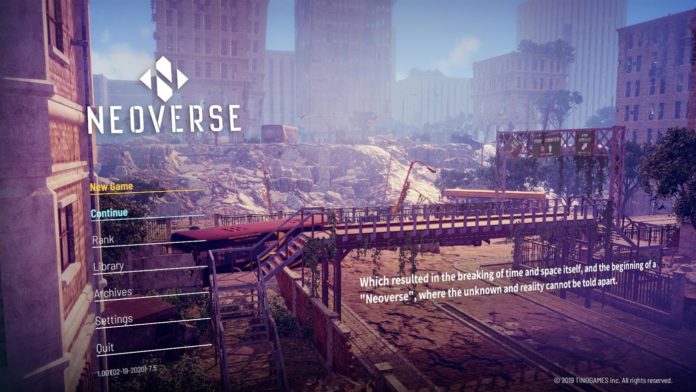REVIEW : Neoverse (XBOX Series X)
Neoverse is a good-looking turn-based deck-builder with a roguelite framework, but is it all shiny sci-fi girls or is there a substantial strategy game underneath?
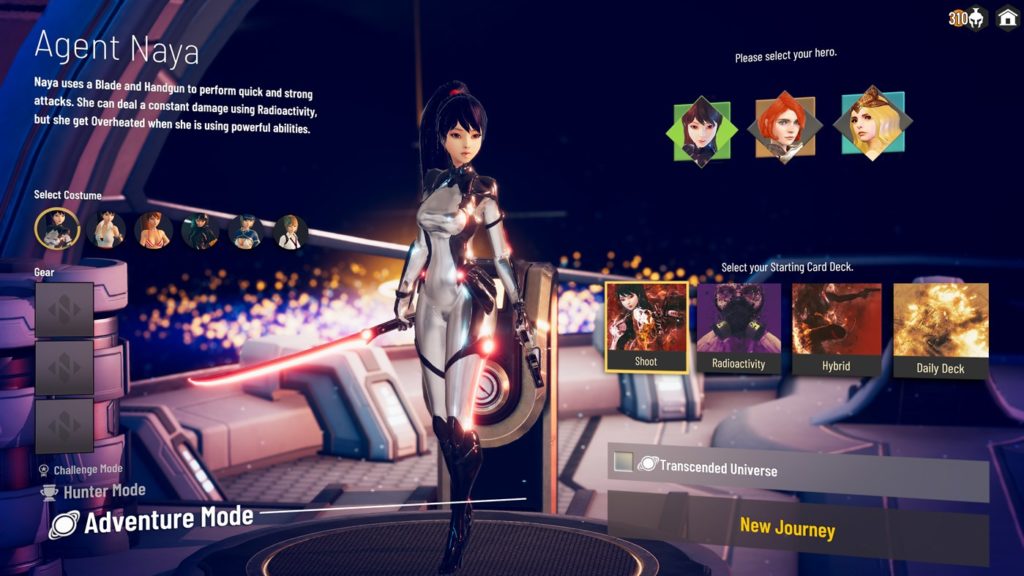
Your job is to perform runs against a set number of opponent engagements and bosses, and see how far you can get, all the while gaining new cards, money and abilities that you’ll then lose after your impending death. It’s also quite difficult and requires a bit of experimentation to see the advantage of some of its systems.
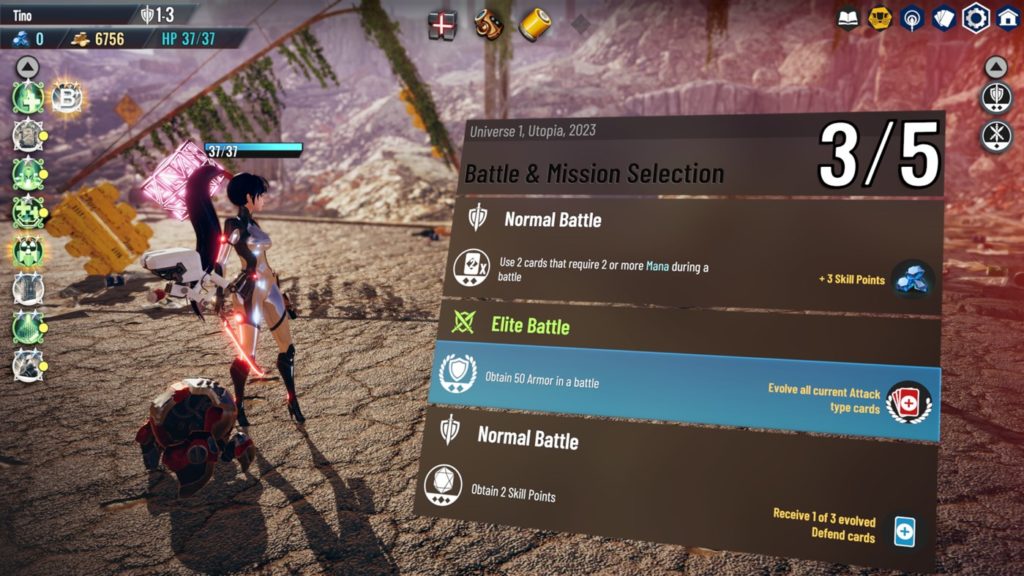
Neoverse is unusually simple in the presentation just a few figures, a few fights screens and no real narrative to comment on whatsoever. but it makes up for this with the sheer complexity of its commands and card controls. If card deck battle plays frustrate the hell out of you, then give this one a broad berth, but for everyone still here after ‘deck-building roguelite’, let’s scuffle and see what’s on the cards.
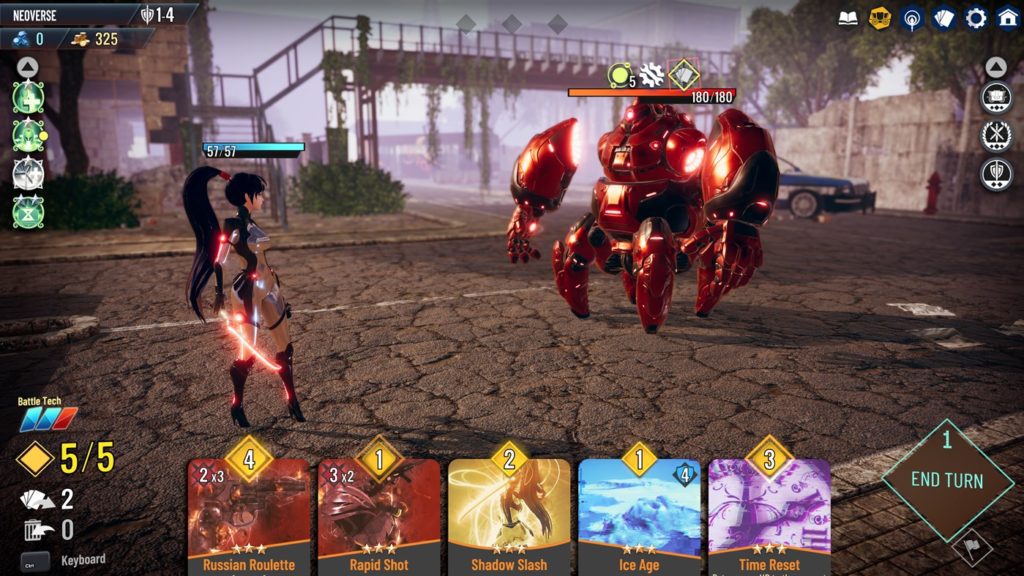
There is a small tear crawl on the title cover that reads like it’s been translated by Google. The Neoverse refers to a multiverse of time and space, achieved ‘after much fiddling’ by humankind. A setting then, at a pressure, for battles that involve knights, robots, mythical monsters, and everything in between. No sign what you’re fighting for or about but there it is.
There are three leads, cookie-cutter shiny future girl Naya, knight girl with armour that wouldn’t help in a fight Clare, and general angel summoner girl Helena. Each is exhibited with a series of battles to get through, but there is nevermore any explanation as to what the ultimate goal of these battles is. There is no character given to any of them and no plot to be found.
Thankfully on the card deck gameplay side, Neoverse is a much more robust game than it has any real right to be. The setup needs you to take your preferred warrior through a limited number of random battles and bosses, earning gold, abilities and stronger cards along the way. Each battle can be a Normal-type or an Elite with complex opponents and more prominent rewards. When you pick your warrior, you can pick from decks of cards with solid moves or more arcane and magic-fuelled ones, and even some really interesting monster or draining types, and this deck will stay with you for that intact run. There are also several distinct modes such as bounties in Hunter mode, or the more complex Challenge mode, but they all amount to the same thing a series of turn-based fights.
There are a lot of little quality-of-life data points all over the screen that is essential to finding your way in battle and enhancing your strategy. The most valuable is that you can see the next move the enemy is going to make every single turn, thereby allowing you to plan accordingly. should they show they are going to attack, you can buff, or if they are going to enhance their armour, you can get your attacks in now. Your health bar shows you the amount of damage you will sustain on the enemy turn, allowing you to buff armour to mitigate the damage. Additionally, if you buff the exact amount, you can pull off a parry, stunning the enemy and giving you a free damage turn. Same with damage to enemies – precision-reduce their health to exactly zero without any overkill, and you get a bonus there too.
There are plenty of other buffs and card-specific powers to get to grips with, but they are all valuable in their way and require a bit of experimentation to see the gains to be made from each strategy. The physical builds are simpler, to start with, but arcane builds start to hit very difficult and make you feel much more influential. It’s possible as you advance you could even feel they are overpowered, but that’s a problem for someway down the line.
There is a perfect mechanic around building up various stats in your character and your enemies. You can build up radioactivity in an enemy, hurting them extra on every turn, or you can recover your health based on the amount of faith you have built up yourself. Naya overheats, which can cause debuffs, but with the correct card, can turn that overheat number into damage output. It’s a tight mix of complex but interesting and complementary systems that will give strategy heads some really interesting fights. There are ways to beat bosses from a point of almost no health and ways to do battle after battle without taking a single hit.
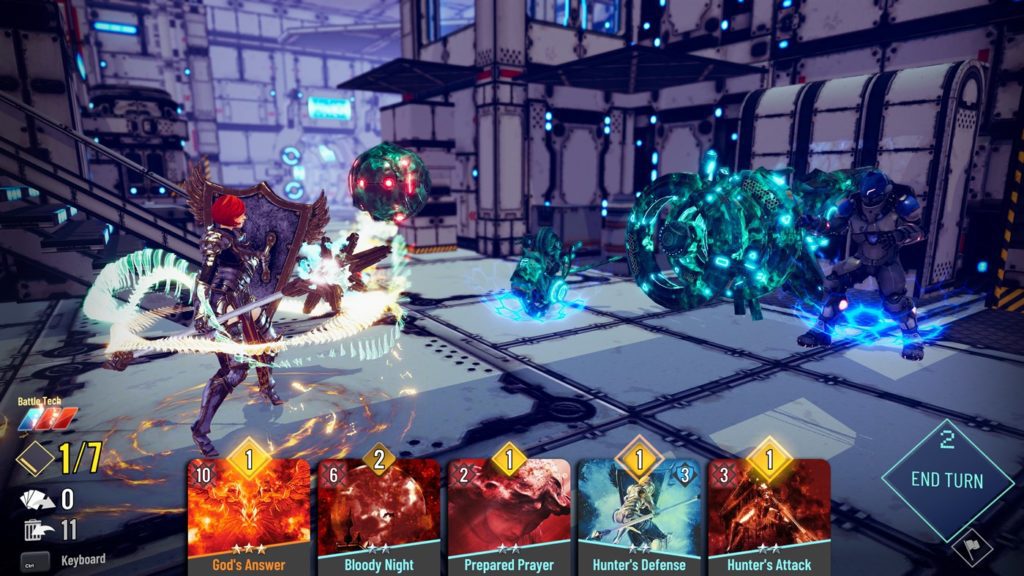
In between each fight you can use the gold and skill scores you earn to buy cards and mana/health buffs that will make gaining to the end of the roguelite run that much more attainable. You can often earn the ability to develop cards by creating the elite battle conditions, making the cards double powered, or intensifying their armour output. The shop also has multiple items and high-level cards, and you’ll have sufficient gold to add a few to your deck every battle or two.
REVIEW : Get Over Here (XBOX Series X)

